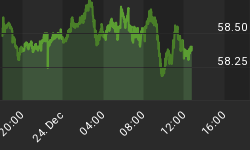In the first few days of July, the prices of gold and silver appeared to break a five-month upward trend by drawing back about five per cent from the record June peaks. Despite many similar corrections that have occurred frequently during the long bull market in precious metals, pundits nevertheless looked to draw bold and significant conclusions from the drop. But just as investors were getting comfortable with the leading explanation - that a looming double dip recession will prevent inflation and thereby dampen demand for precious metals - the markets for both metals stabilized.
Most investors still credit the accepted orthodoxy that metals will only gain if inflation is widespread or a financial crisis encourages investors to seek safe havens. The failure of both metals to break below their upward trend lines, despite the lack of news on both fronts, should lay to rest these canards. Unfortunately, nothing appears more resilient than the belief in a gold bubble.
In my opinion, the current rise of precious metals is the direct result of the evident profligacy of governments the world over. Spendthrift politicians in Washington, London, and Tokyo, have caused people to lose faith in paper currencies. Investors, as well as an increasing number of lay citizens, understand that debts cannot be accumulated forever and that the most tempting solution will be to simply print more currency. The only alternative is an unpalatable tax hike that will only serve to reduce long-term revenue, as explained by the famed Laffer Curve.
This conflict will remain whether or not the CPI is currently spiking, and whether or not appetite for risk returns to the marketplace. So, until the political currents change or we face sovereign catastrophe, I believe gold and silver will be in a sustainable secular (long-term) bull market - not a bubble.
With the long term trend line of gold and silver still intact, but with current prices below their recent highs, many investors may be sensing buying opportunities. If so, which metal looks more attractive?
The price of gold and silver are typically influenced by several factors that do not affect prices for conventional commodities.
Gold holds the status of being the world's ultimate store of value. Neither governments nor wealthy individuals seem to be able to sleep soundly without some cache of the yellow metal. Gold is less used in the industry and its price less easily manipulated. Therefore, the big players in the precious metals markets, especially central banks, tend to invest portions of their vast holdings into gold.
Silver is generally the province of smaller investors. It is more accessible on a price-per-ounce basis, akin to the B-shares of Berkshire Hathaway. Silver has many industrial uses, giving it exposure to the commodity and monetary markets. This means the silver price tends to be more volatile and relatively less favored as a safe haven by the big players.
During the financial panic of 2008, the fortunes of gold and silver parted drastically. In that calendar year, when nearly every asset class fell dramatically, gold lost only 29% of its value from peak to trough. Silver, on the other hand, fell much harder - down 57%. But silver has bounced back harder. Since the trough, the price of silver is up 97%, as compared to 66% for gold. What's more, the price of silver is still below its 2008 high, while gold has been continually setting new records on a daily basis. Based on these technicals, it is likely that many investors may perceive value in silver.
Generally, the rule of thumb is that gold offers relative stability and silver offers greater upside (and downside). Therefore, the amount of additional risk an investor is willing to take will determine the gold/silver ratio in his portfolio. The other aspect is the ratio between physical metals and metal mining companies. The former are historically relatively safer, but don't generate revenues like owning stock in a miner can. Again, the allocation to each would be up to the individual investor. Each alternative represents a different way to access what I have argued is a secular bull market in precious metals.
I believe that more and more observers will recognize the nascent sovereign debt crisis as merely the precursor to a currency collapse. If I am correct, then investors will likely continue to pour into assets with intrinsic value, including precious metals. From my vantage point, the choice between gold and silver is of secondary concern. Investors should be more wary of clinging irrationally to an anachronistic US dollar regime.
New Special Report: Peter Schiff's Five Favorite Gold & Silver Mining Stocks. Click here to download.
For in-depth analysis of this and other investment topics, subscribe to The Global Investor, Peter Schiff's free newsletter. Click here for more information.
Click here for a description of Peter Schiff's best-selling, just-released book, How an Economy Grows and Why It Crashes.
Please note: Opinions expressed are those of the writer.
















